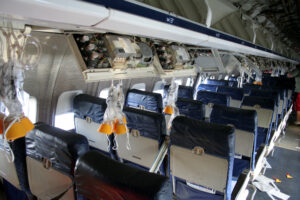While slippery winter walkways are gone for now, new tripping hazards have emerged in the spring and summertime. There are several hazards that cause dangerous trip-and-fall accidents this time each year, including sidewalk cracks, unsettled surfaces, and poor walkway maintenance.
What causes trip-and-fall incidents?
Trips are most often caused by unexpected hazards or level changes of a level walking surface. Small elevation changes are particularly dangerous to pedestrians because of the unlikelihood that they will be noticed. Most trips occur when a pedestrian is walking and the forward motion of their foot is halted unexpectedly. Thus, it is important to alert the public of potential trip hazards. Visual cues about trip hazards will help reduce trip-and fall incidents and help foster the safe use of a premises. Without these cues, pedestrians may be unaware of a potential falling hazard until they trip and injure themselves.
How do you keep pedestrians safe on your property?
The U.S. Department of Transportation Federal Highway Administration has a list of common trip-and-fall repair and maintenance practices for pedestrian facilities across the nation. By addressing present and future hazards through proper maintenance practices, you are not only increasing pedestrian safety, but also protecting yourself from being held liable for trip-and-fall accidents on your property.
There are three types of maintenance that are necessary to maximize pedestrian safety on your property:
- Corrective Maintenance: activities performed in response to a present safety hazard.
- Preventative Maintenance: activities that extend the functional lifespan of a facility and prevent hazards from emerging.
- Routine Maintenance: ongoing, day-to-day activities scheduled to maintain and preserve the condition of a facility.
Additionally, there are a number of steps you can take while constructing and maintaining your facility to minimize pedestrian fall risk:
- Walking is most safe on flush, non-slippery, planar, stable surfaces. If possible, use this type of surface to decrease the likelihood of a fall.
- Construct and maintain floors, parking lots, pathways, patios, and sidewalks to be free of tripping hazards.
- If hazards cannot be eliminated, guard them from pedestrians and/or implement a visual cue or warning to make the hazard visible to others.
- Avoid using single-riser stairs where possible. If you have to use them, include apparent visual warnings and safety tools such as accent lighting, contrast in surface colors, handrails, and warning signs.
If a trip-and-fall or slip-and-fall accident has impacted you or a loved one, call us at 703-836-3366, email tcurcio@curciolaw.com, or visit us at curciolaw.com and we will follow up with you right away.

Rakin Hamad joined Curcio Law as an associate in August 2018 after graduating from George Mason Law School. During law school, Rakin demonstrated his dedication to client advocacy and was a member of the trial advocacy association, the pro bono society, and the George Mason Law Review. His approach to the law mirrors the firm’s philosophy of treating each client with commitment, compassion and character. Contact Rakin at rhamad@curciolaw.com.











Comments for this article are closed.